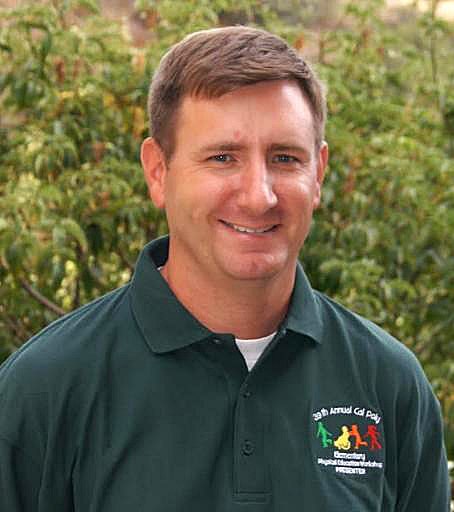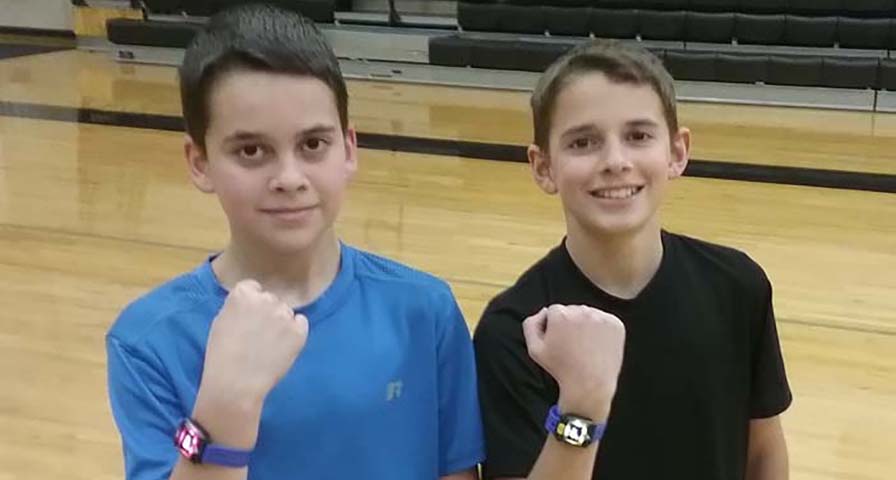Principal, Board of Trustees Invest In School’s Physical Education Program as Way to Promote Activity and Health While Demonstrating Student Development
A California teacher secured federal funding to purchase heart rate monitors that will encourage students to rediscover physical activity after a year of remote learning.
“I know we have a lot of kids who have been very sedentary (while away from campus), as I have,” Matthew Bassett, the 2018 SHAPE America National Elementary PE Teacher of the Year, said. “We believe this will be a good way to get them going again and get them back where they need to be.”

Matthew Bassett applied for and received CARES Act funding from his school administration to purchase 160 IHT ZONE heart rate monitors that his students at San Jose (Calif.) Charter Academy wear during their PE classes.
Bassett worked with his principal at San Jose Charter Academy (Calif.) to request Coronavirus Aid, Relief and Economic Security (CARES) Act funding to add sets of IHT ZONE heart rate monitors to his program for the 2021-22 school year.
Deciding on the IHT ZONE Heart Rate Monitor
Bassett became familiar with the IHT ZONE heart rate monitor while attending a state conference for physical education teachers in 2019. He compared the IHT ZONE with other heart rate monitors and based his decision on several factors.
“There were bells and whistles that I liked with other companies, but knowing that the battery didn’t need to be replaced all the time, that we wouldn’t need to send them in, is a really cool thing,” Bassett said.
The IHT ZONE’s battery lasts throughout a school day and can be recharged overnight in its storage and charging case. With as many as five classes per day, Bassett didn’t want to waste time changing batteries or charging monitors that wouldn’t last.
Along with the battery, Bassett focused on the IHT ZONE’s ability to provide the student – and any other invested stakeholder – with heart rate data immediately following a class session. Students – and parents if selected – receive an email showing the student’s key performance metrics from class:
- Graph of the student’s heart rate throughout the session
- Minutes of time spent exercising in each fitness zone (blue=resting; yellow=moderate activity; red=vigorous activity)
- Minutes spent exercising in the target fitness zones compared to the teacher’s goal for that session.
“Being able to send email messages home,” Bassett said, “that is awesome to show data. I also like that students respond (to the email and provide their thoughts and feelings) and I can gain access to that response.”
Along with the heart rate monitor, IHT’s Spirit Assessments software gives teachers access to assessments – including nationally recognized fitness tests – and rubrics that are tied to national standards.
“From the administration standpoint, (we liked) all that we could get into on the assessments and rubrics that were already a part of the software,” Bassett said. “(My administrators) were really excited about that. Things that connect to the national standards that we can use to showcase learning.”
Making His Funding Request
As the 2020-21 school year wound down, Bassett began planning ahead. After teaching online PE for a year – overcoming expectations that PE wouldn’t work online (“You can teach PE online,” he said. “It’s different and it was messy, but you can teach it.”) Bassett wanted to be ready when students returned.
“We have to meet students where they are before we can move forward,” he said.
Bassett knew the IHT ZONE could help him do that, so he met with Principal Erin Shiroma and made his case for a portion of the federal funding he knew had been allocated to the California Department of Education.
“Toward the end of the school year, I decided I would just take a shot at this,” Bassett said. “I think I asked at the right time. I thought ‘hey, these are one-time funds…we could use the money for this and I think these would be great for our students and good for our department.’”
He thought that was his best chance to find funding to purchase a set of heart rate monitors for each teacher – four in total.
“I know that trying to find money and get enough for all four of us so that we didn’t have to share, the CARES funding made it nice that we didn’t have to take money out of the (PE) budget,” he said. “We would have really had to stretch or maybe we would have only been able to get one or two sets this year and then maybe one or two in the future.”
Bassett made his case and Shiroma agreed. She took his request to the school’s board of trustees, and they signed off on it. Because SJCA is a charter school operating as its own local education agency, the school’s board of trustees could access CARES funding directly from the state department of education. Bassett was grateful to see his request granted.
“It was really nice to see that they were able to invest in our department,” he said. “It was nice at the tail end of the year to go in and say we’d like to get started in the next school year on the right foot. It was cool to see it come through.”
Using Heart Rate Technology to Encourage Student Growth
IHT’s heart rate technology gives Bassett a high-tech, data driven solution that keeps students excited and engaged. It also empowers them to take ownership of their physical and emotional health.
“I’m hoping to see a lot of people moving really, really hard,” Bassett said. “I think what’s going to happen is they’re going to see where they are on their monitor and think ‘ooh, I want to get a little higher.’ It will be really cool to see that when we get there.”
Helping students get comfortable with being back on campus and being in good emotional spaces will be critical as well. Just as switching to online PE proved challenging, so will returning to campus. Once students are comfortable again, Bassett expects to see big things. What students get from the heart rate monitors will help.
“We’re back to something that’s new and we’re kind of uncomfortable again,” Bassett said. “We have students that we’re encouraging a lot again because they weren’t moving as much, and that’s okay. I’m really excited about the heart rate monitors because I think once they have real-time data that they can see, that’s going to motivate them. That will be really, really important for us.”


